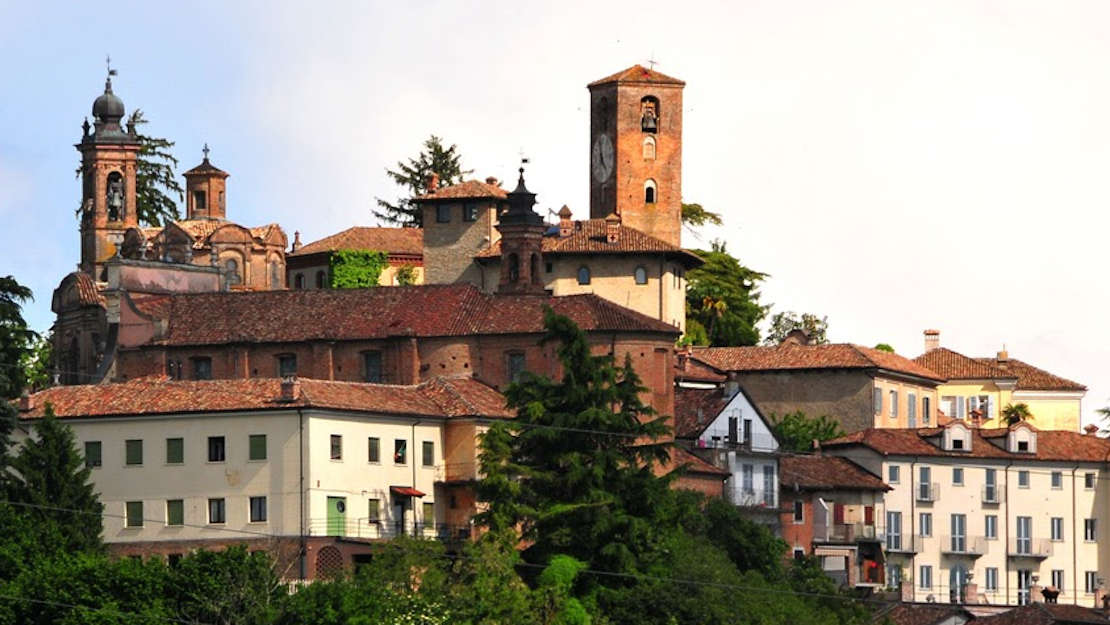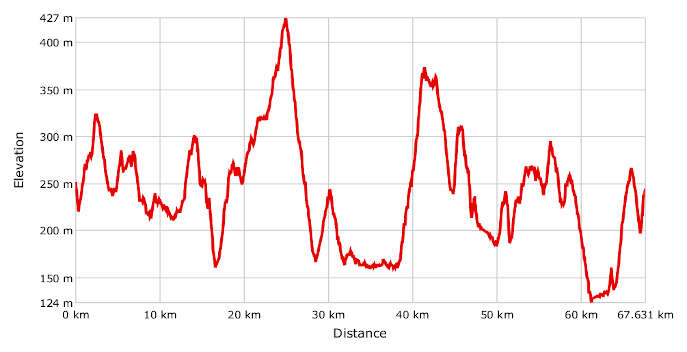
- Bike: strada
- Difficulty: ****
- Distance: 67 km
- Altitude difference: 303 m
- Total ascent: 1398 m
- Total descent: 1405 m

The landscape of Langhe is almost entirely one of limestone, which is why so much wine is made there. Two great wines in particular stand out. Barolo and Barbaresco are both produced from the most important red grape in the region, Nebbiolo, which many call the king of Piedmont.
Monferrato Astigiano and Monferrato Casalese lie on marl limestone and their earth is white. This is the kind of area the Barbera and Grignolino grapes prefer. Barbera is, going by amount of land occupied, the most important red grape in Piedmont. It takes up about 35% of the region's vineyards, or 50,000 hectares.
That's why we want to celebrate the marriage of Barbaresco and Barbera – in this case Barbera d'Asti – two wines known and loved around the world.
Costigliole d’Asti, is one of the five most populous municipalities in the province of Asti, and the home of Barbera. It also gives over more land to wine growing than any other municipality in Piedmont.
Leave the town, with its pretty Rorà castle, home to the wine shop and association of Barbera d’Asti and Monferrato wines. Go downhill to Castagnole delle Lanze, on the border between Langhe and Monferrato. The town is famous for its Contro Festival, a big music event, and its Barbera festival. Carry on to medieval Neive, in the I Borghi più belli d’Italia (Italy's most beautiful villages) club. Carry on to the village that lends its name to Langhe's most prestigious wine, Barbaresco. You cannot fail to stop here at the regional wine shop. Carry on to Treiso d’Alba, on roads surrounded by rows of vines. Your next stop is Alba, the capital of Langhe. After a brief visit to the old town centre, carry on along minor roads to Guarene, where you should definitely stop to admire the castle, now home to a luxury five-star hotel. Get back on your bike and over to Castagnito, a village in Roero, and then Castellinaldo d’Alba. Go on to Priocca and then Govone, whose castle was a residence of the royal house of Savoy from 1792 to 1870. In 1997, it was placed on the UNESCO World Heritage list along with the other Savoy residences. Carry on to San Martino Alfieri, in a scenic area known as the 'hills between the rivers', the watershed of the Tanaro and Borbore. Once you've passed the Tanaro, go up to the end of the route in Costigliole d’Asti.
